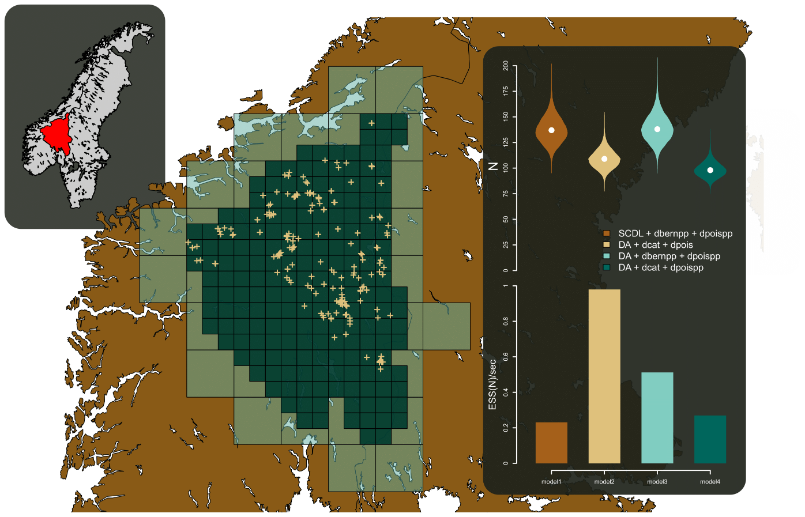Modelling spatial capture-recapture data

Statistical methods are widely used in ecological research to study, for example, the status of wildlife populations, the relationship between animals, and the interaction between animals and the environment. Capture-recapture (CR) or spatial capture-recapture (SCR) data are common ecological data that are collected to study the abundance, survival, recruitment and/or other key parameters of animal populations.
Many models have been developed to deal with CR and SCR data; however, as modern data collection tools (cameras, genetic samples) are increasingly used new modelling challenges arose. A common issue is that one is not able to identify captured animals correctly and uniquely, which is required by most existing models. Failing to account for these leads to misleading results. In addition, when non-invasive genetic sampling is used for spatial CR data collection the observational process is continuous (instead of individual detectors) over the spatial domain of interest. We developed appropriate models that can be used in these scenarios.
The models we developed are hierarchical and include two parts, one for modelling the underlying biological process and the other for the observational process. It is challenging and computationally costly to fit these models for large datasets. We developed efficient inference methods that approximate the likelihood of the model via the saddlepoint approximation. For SCR models, we provided efficient utility functions and fitting methods in the R package nimbleSCR.

Researchers
Publications
- Fast likelihood‐based inference for latent count models using the saddlepoint approximation, Biometrics, 75(3), 723-733 (2019).
- Maximum likelihood inference for the band-read error model for capture-recapture data with misidentification, Environmental and Ecological Statistics, 28, 405-422 (2021).
- Latent multinomial models for extended batch‐mark data, Biometrics (2022).
- A flexible and efficient Bayesian implementation of point process models for spatial capture‐recapture data, Ecology, e3887 (2023).
Packages
Organisations

